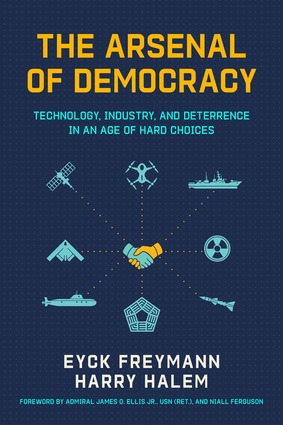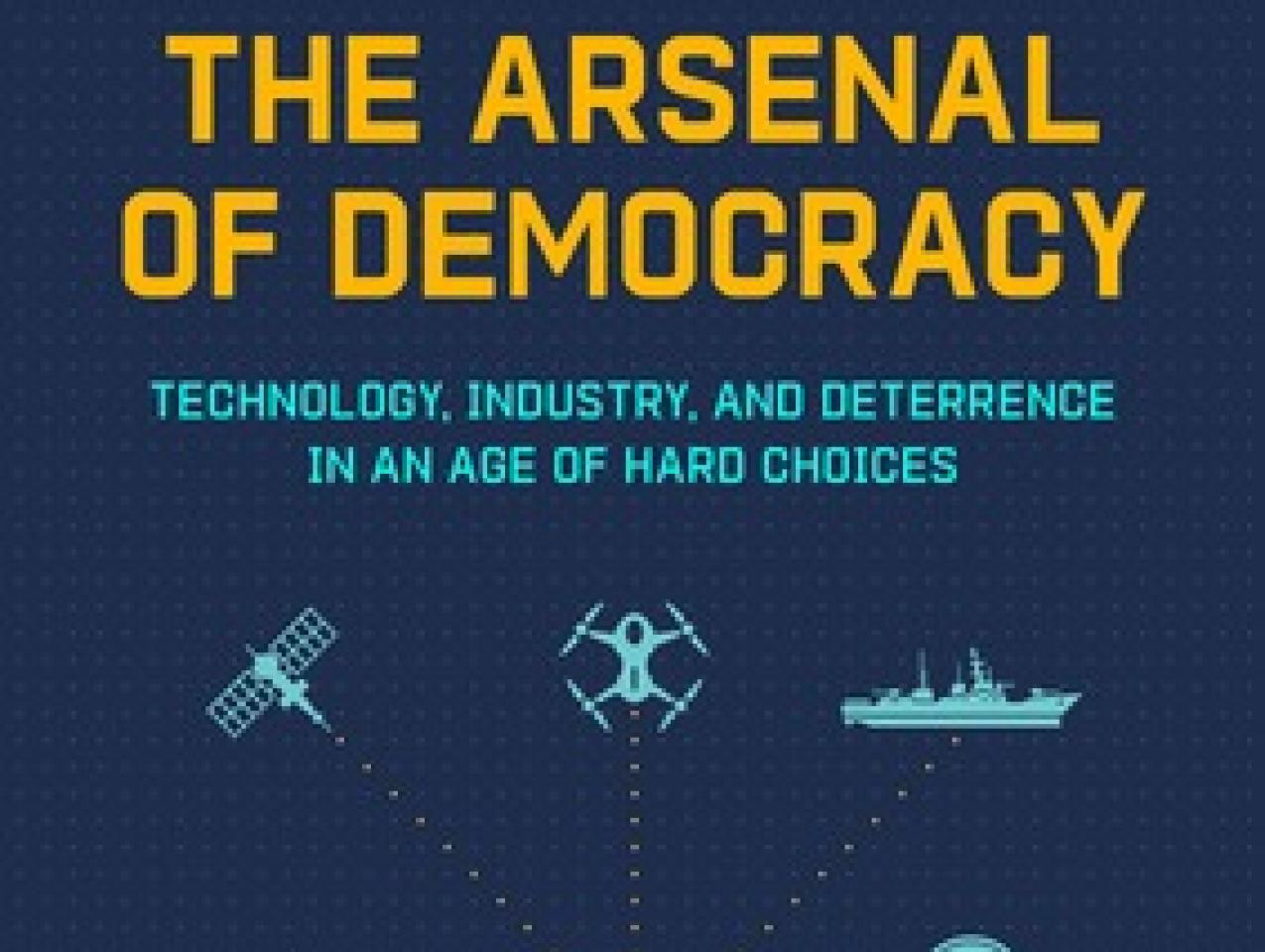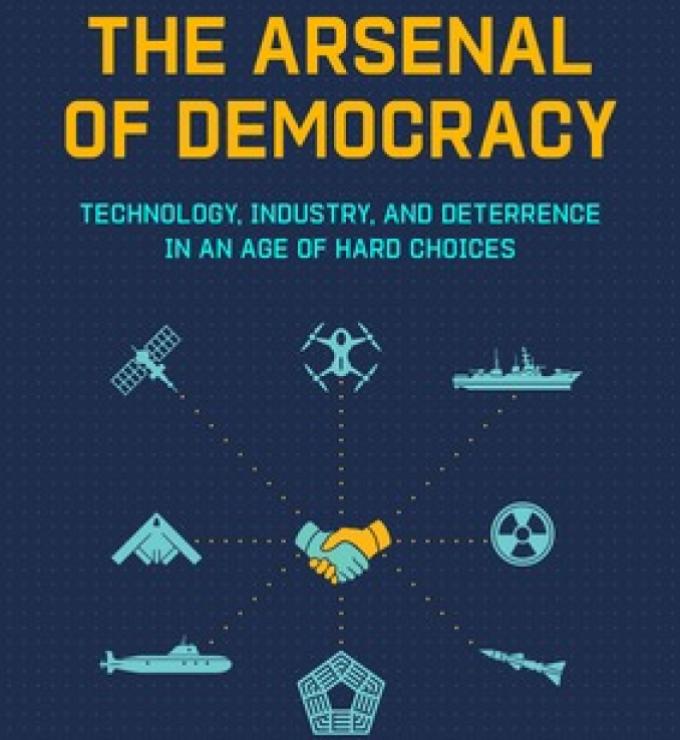- Security & Defense
- Military
- China
- Confronting and Competing with China
- Determining America's Role in the World
This essay is excerpted from The Arsenal of Democracy: Technology, Industry, and Deterrence in an Age of Hard Choices, by Eyck Freymann and Harry Halem (Hoover Institution Press, 2025). Click here to order.
Every major power has struggled with military transitions in response to emerging threats. Those that failed to adapt in time have paid the price.
Techno-optimists have the right idea, but they tend to miss a crucial point: technology alone doesn’t win wars—or deter them. What matters is how nations produce and deploy capabilities at scale. Militaries are complex systems that must be able to reconstitute and adapt under fire. Technology competition matters, but the greatest risk to US deterrence isn’t falling behind on any particular capability. The risk is that China might conclude that US and allied forces lack the overall capacity and resilience to sustain a prolonged fight.
Insights
Surveillance and reconnaissance: A force that cannot see the battlefield cannot win on it. The history of modern warfare makes clear that reconnaissance and counter-reconnaissance are just as important as strike capability. Whichever side enjoys better surveillance, disrupts the enemy with electronic warfare, and maintains secure communications can enjoy compounding advantages in an ongoing engagement. China’s actions show that it understands this fact. The United States must treat resilient space-based C4ISR networks [command, control, communications, computers, intelligence, surveillance, and reconnaissance], counterspace capabilities, and electronic warfare as critical enablers of deterrence.
New ways to strike: Meanwhile, the precision revolution is fundamentally reshaping how militaries fight and organize themselves. Precision weapons and autonomous systems are getting smarter and their ranges are getting longer. These trends existentially threaten aircraft carriers and forward bases, which must either adapt or become obsolete. The US military must continue its shift toward a more dispersed and survivable force posture, integrating unmanned platforms, resilient logistics networks, and adaptive strike capabilities. History suggests that defensive capabilities advance in parallel with offensive breakthroughs, and sometimes even outpace them. At the same time, America must ensure that it has enough long-range munitions and related production capacity to strike all key enemy targets, plus a comfortable margin for error, and an industrial base that can ramp up as needed.
Logistics: A US-China war would likely begin with a dramatic, high-intensity engagement, but it could transform into a prolonged contest of attrition and adaptation lasting months or even years. China holds a large industrial advantage in the mass production of key military hardware, including missiles, drones, ships, and air defenses. If China assesses that it can outproduce and outlast the United States in a war of attrition, it may conclude that war is a rational gamble.
History demonstrates that perceptions of industrial strength inform decisions about whether and when to start wars. Imperial Japan miscalculated in 1941. It assumed that the United States would take years to mobilize a counterattack and that in the meantime Japan could fortify its position in Asia well enough to defeat an American counteroffensive. Washington must ensure that Beijing does not make a similar miscalculation today. That’s why it must invest in stockpiles, workforce training, and production capacity at scale. America must also show it can ramp up production of key defense articles quickly if needed and keep its critical combat and logistics systems functional if China attacks them.
Bureaucracy and budgets: More money would be very helpful for addressing these challenges, but this is not just a question of spending: bureaucratic inefficiency and inertia are as much a threat to readiness as underfunding. The Pentagon’s procurement system remains paralyzed by red tape, delaying critical programs and inflating costs. By contrast, China has spent decades building an enormous defense-industrial ecosystem and is moving quickly to fill the remaining gaps in its force structure. As long as the United States and its allies maintain disconnected, slow-moving industrial bases, they will be at a structural disadvantage. The allies must coordinate to exploit comparative advantage and economies of scale. Without policy alignment, higher allied spending on defense will be largely wasted. Critical capabilities will remain in short supply when they are needed most.
Future technologies: Technological superiority remains America’s most important asymmetric advantage, and America must work with its allies to keep it. Foundational research in areas like undersea warfare, space-based surveillance, AI sensor fusion, and precision munitions will be a key area of competition into the 2030s. Beijing is aggressively mobilizing its entire industrial and technological ecosystem to catch up in these technologies. The United States must fully leverage its own private sector, universities, and alliances—particularly in areas where it is falling behind, such as autonomous systems and quantum computing. The long-term goal should be a fully integrated allied defense-industrial base in which each ally brings distinctive assets to the table.
Coordination on procurement and force integration is no longer optional. Even if China lags behind in inventing new technologies, it can compensate by cutting down the time to deployment, turning second-mover advantages into battlefield dominance.
Emerging technologies will not replace legacy platforms overnight, nor will they deliver their promised capabilities as quickly as optimists predict. The history of military adaptation is one of coevolution—new technologies and traditional force structures often integrate gradually rather than in sudden revolutions, with new technologies at times amplifying the effectiveness of legacy systems rather than replacing them outright.
The United States must avoid the mistake of gambling on a force transformation that may not arrive in time to matter. Instead, it must pursue incremental, targeted adaptations that strengthen today’s warfighters while repositioning the force for future dominance. That means maintaining a robust fleet of attack submarines, hardening forward bases in the Indo-Pacific, integrating unmanned systems across the force, and scaling up the production of high-end munitions. These efforts, too, must be coordinated with allies.
Deterrence is already under pressure. Without decisive action, it will continue to erode. US-China military competition is an industrial and institutional race to invent new technologies, translate emerging technologies into warfighting capability, and deploy them at scale. The next five years will determine whether the United States can mobilize itself to compete or whether it will enter the 2030s with a force and defense industrial base too outdated or brittle to win a sustained fight. The clock is ticking.
Leadership
America still has the technological, political, and strategic strength to sustain deterrence—but it needs strong political leaders who can explain to the American people why the investment is worth it. The world of the post–Cold War era is gone, and the United States cannot assume that peace and stability are self-sustaining. But at the same time, America’s interests are aligned with those of fellow democracies facing a shared challenge from rising authoritarian powers.
The last time America confronted such a moment, Franklin Roosevelt framed the stakes clearly:
Some of our people like to believe that wars in Europe and in Asia are of no concern to us. But it is a matter of most vital concern to us that European and Asiatic warmakers should not gain control of the oceans which lead to this hemisphere. . . . The decision as to how much shall be sent abroad and how much shall remain at home must be made on the basis of our overall military necessities. We must be the great arsenal of democracy.
If American leaders can take inspiration from this history, they can rise to the occasion once again.

















